Noise, as the chief culprit in destroying the quality of people's work and living environment, will not only seriously endanger the human auditory system, make people tired, deaf, but also accelerate the aging of mechanical structures, affecting the accuracy and service life of equipment and instruments. Car noise can be divided into interior noise and exterior noise. The noise outside the car affects the surrounding environment and interferes with people's sleep and work; the noise inside the car affects the physical and mental health of the driver and passengers, driving safety and ride comfort. Through scientific research and long-term practice, noise can cause the driver's nervous system to decline, which not only damages the driver's hearing, but also causes the driver to fatigue quickly, posing a great threat to the safety of the car. Therefore, the harm of noise should be highly valued by people.
In order to improve the comfort of the vehicle, the world's major automobile companies have set strict control standards for the noise level inside the vehicle, and the control of the interior noise is an important research direction. Especially for cars, the noise inside the car is one of the standards for measuring the grade of the car. The motor noise level directly reflects the quality level of the car. In recent years, some large domestic automakers have continuously strengthened research and control in the interior noise of vehicles. Not only have they established vibration and noise departments, but also introduced and trained many senior talents, and invested a large amount of funds to introduce test equipment.
Great Wall Motor mainly produces pickup trucks, SUVs and cars, which are in the stage of rapid development. Great Wall Motor attaches great importance to NVH, and intervenes in NVH work during the development stage. Together with the effective combination with CAE, it truly produces excellent value-for-money automotive products. This paper introduces a practical case in which a popular model of Great Wall Motor uses the Dow Chemical two-component polyurethane foam material to block the body noise transmission to improve the interior noise.
In-vehicle noise analysisNVH is the abbreviation for noise, vibration and harshness (Noise, VibraTIon and Harshness). It mainly studies the effects of vehicle noise and vibration on vehicle performance and comfort and related control improvement techniques.
1. The main source of noise in the carAll vibrating objects that radiate noise to the surroundings are called noise sources, and the car is a complex combined noise source for high-speed motion. The vibration generated by the operation of automobile engines and transmission systems, the rolling of automobile tires on the ground during high-speed driving, and the action of the body and the air are the root causes of automobile noise. Specifically, the noise sources of automobiles mainly have the following aspects:
(1) Engine noise includes intake noise generated during engine operation, exhaust noise, cooling fan noise, and structural noise, as well as vibration due to engine combustion and moment of inertia, causing the body to be driven by the engine suspension and the sub-frame. Vibration, this type of noise is characterized by medium and low frequency noise.
(2) Road noise road surface unevenness excitation causes body vibration through suspension, etc. This type of noise is characterized by low frequency noise.
(3) Tire noise During the driving process, when the tire rolls on the ground, the air in the groove is caused by the pumping effect caused by the ground extrusion and re-inhalation process, and the tire vibration produces tire noise. This type of noise is characterized by medium and low frequency. noise.
(4) Wind noise The high-speed airflow and the surface pressure pulsation caused by the action of the surface of the car, as well as the airflow passing through the unenclosed body and the vehicle passage to the cockpit generate aerodynamic noise, which is characterized by high frequency noise.
2. The way of transmission of noise inside the carThere are two ways in which noise can be transmitted to the car, through body structure propagation and aerodynamic propagation.
3. Reduce noise in the car by blocking the cavityAccording to the mechanism of noise generation and propagation, noise control techniques can be classified into the following three categories: control of noise sources, control of noise propagation paths, and protection of noise receivers. This article focuses on the use of control measures in the propagation of noise, such as sound absorption, sound insulation and other measures.
When the vehicle is driving at a high speed, the noise generated by the pressure change caused by the separation of the airflow around the body is the so-called wind noise. The vehicle interacts with the surrounding air flow field, and the flow field forms a boundary layer on the surface of the vehicle. Produces powerful separation, turbulence and turbulence. In addition, the modern mainstream body design adopts a uni-tied body (uniTIzed-body), and the body side panel is welded by inner and outer thin-wall steel plates, and there is a bypass cavity structure, thereby generating a high-speed airflow field in the side wall cavity passage. It is the so-called cavity resonance noise; at the same time, engine noise, tire noise, road noise and even dust also propagate into the vehicle through the side cavity channel. Therefore, cavity blocking and body seals are especially important to reduce interior noise.
The study pointed out that the airborne noise is proportional to the 6th power of the vehicle speed, that is, the vehicle speed is doubled and the sound pressure level is increased by 18? dB. When the car starts, it generates mechanical motion noise, and the engine noise increases with the increase of the vehicle speed; when the car travels faster than 50? At km/h, the tire noise gradually appears when the speed exceeds 80? At km/h, tire noise becomes the main component of vehicle noise; when the car travels faster than 100? At km/h, the high-speed airflow field noise will increase rapidly; when the car speed reaches 120? At km/h, it is the same as the sound pressure level of the tire noise. When the speed of the car continues to increase, such noise will exceed other noises as the main source of noise. Therefore, it is very important to block the airflow from the side wall cavity to suppress the propagation of noise through the air.
Mechanism of action of two-component polyurethane foam in cavity blockingThe two-component polyurethane foam material can be rapidly reacted and foamed at a normal temperature and rapidly formed. When applied to a side-by-side bypass cavity seal, it is a very effective technique for airflow blocking and suppression of airborne passages. While blocking the passage, since the polyurethane foamed material has the internal structure of the porous sound absorbing material, that is, it has many minute gaps and continuous bubbles, due to the internal friction of the material itself and the air between the pores of the material and the pore walls. Friction, so that the sound energy is obviously absorbed and attenuated, the sound absorbing material can effectively absorb the sound energy incident on it, which makes it have good high frequency sound absorption performance. This is because, when sound waves are incident on the surface of the porous material, there are mainly two mechanisms that cause the attenuation of the acoustic wave: firstly, the vibration caused by the vibration of the acoustic wave causes the air in the small hole or the gap to cause friction with the wall of the hole, close to the hole. The air on the wall and the surface of the fiber is not easily moved by the wall of the hole. Due to the action of friction and viscous force, a considerable part of the sound energy is converted into heat energy, so that the sound wave is attenuated, and the reflected sound is weakened to achieve the purpose of sound absorption; secondly, small The heat loss caused by the heat exchange between the air in the holes and the walls of the holes and the fibers also attenuates the acoustic energy.
Therefore, compared with the two injection-expanded partitions which are currently filled with more cavities, the polyurethane foamed material not only has the advantages of three-dimensional expansion and reliable sealing, but also has good sound absorption characteristics which the former does not have, so that it is suppressed. Noise shows excellent performance through airborne pathways. Figure 1 shows a side-section anatomical view of a partially polyurethane foamed material and a two-dimensional expanded septum.
Advantages of two-component polyurethane foam in cavity blockingThe two-component polyurethane foaming material is applied to the cavity blocking, and has the following advantages: three-dimensional reliable sealing; good sound absorption performance; multi-model can share the injection device of polyurethane foaming material; no mold input, low material cost; The injection mode can be adjusted at any time; it can be directly extended to future models without the need to modify the injection equipment.
Two-component polyurethane foam material application example 1. Scheme designIn the practical application of a certain model of Great Wall Motor, the SQC (Sound Quality Cascade) method is applied to establish the NVH performance simulation analysis model of the relevant vehicle system through transmission path analysis. Under the simulation conditions, the cavity sealing position is further modified within the feasible range of the project until the noise passes through the transmission path to the whole vehicle to achieve optimal control. Specific locations for the design of the closure include the front windshield frame, the side of the car and the rear windshield, and the lower part of the wheel cover.
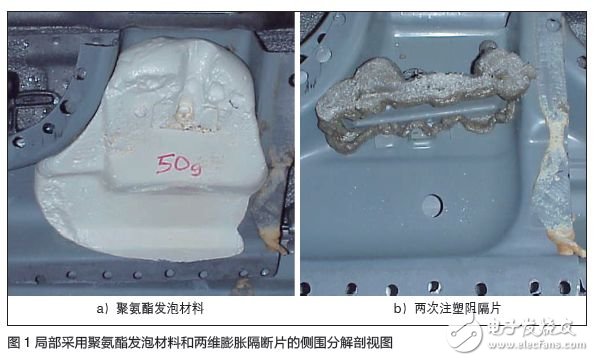
Using Dow Chemical's two-component polyurethane foam material BETAFOAMTM 87100/87120, the material has been filled with hundreds of millions of cavities in China since 2005.
3. Equipment selectionFor production and trial production, the US GRACO 24:1 NVH foaming equipment (the acquired GUSMER company provides DOW with 24:1 NVH foam development test prototype), the equipment includes the feeding system and related material management equipment solutions. Xingxin is also a traditional equipment supplier for domestic users of DOW 24:1 materials. The NVH foaming equipment is shown in Figure 2.
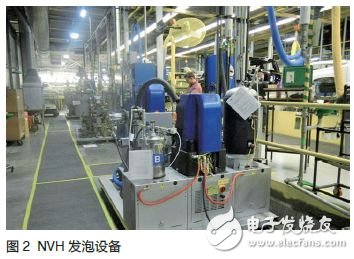
The test purpose of this test is mainly to measure the noise characteristics of the vehicle under test, and compare the noise level of the internal noise of the same vehicle (before and after the bypass cavity treatment), so as to check the bypass cavity blockage to the load-bearing body (unit Car body) The influence of vehicle interior noise. The test equipment is shown in Figure 3. The whole vehicle is placed in three microphone microphones: the outside of the driver's seat, the outside of the passenger's seat and the rear seat. The set position is shown in Figure 4. 10 cycles per vehicle operating condition? s signal acquisition, each working condition measured 4 to 5 cycles, retaining 3 sets of more consistent data signals.
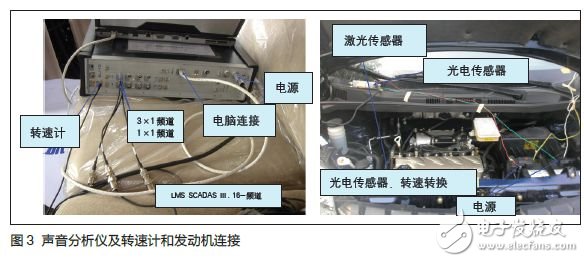
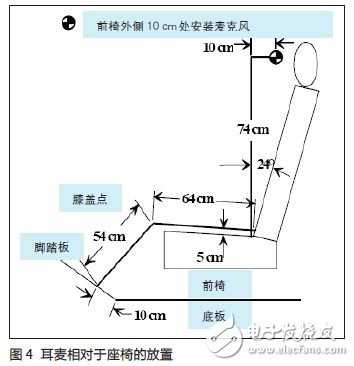
As shown in Fig. 5, in the accelerated state, it can be seen that the data collected from the test vehicle filled with the Dow two-component polyurethane foam material (green curve) is the frequency domain of the reference sample vehicle (red curve). Sound pressure level is 3~5? dB.
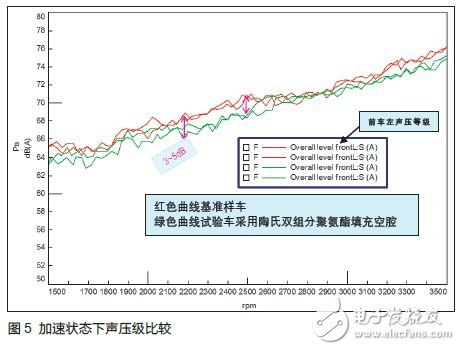
As shown in Figure 6, at 110? In the km/h cruising state, it can be seen that the data collected from the test vehicle filled with the Dow two-component polyurethane foam material (green curve) is lower than the frequency domain sound pressure level of the reference sample vehicle (red curve). 3 to 4? dB.

The motor noise control capability directly reflects the control level of the vehicle quality and has received extensive attention in the industry. Cavity blocking is an important method to control airborne noise in the car, which can effectively improve the NVH performance of the vehicle. Among them, the design of the body cavity blocking position and the selection of the blocking material are crucial for the cavity blocking effect. In the practical application of a certain model of Great Wall Motor, the Dow chemical cavity blocking scheme and the two-component polyurethane foaming material filled the cavity effectively improved the NVH performance of the vehicle.
Shenzhen Konchang Electronic Technology Co.,Ltd , https://www.konchangs.com